#World Famous CB
Text
The Pro wrestling debut of Kaisei Takechi, part of the Rampage from Exile Tribe, a subgroup of Exile Tribe, a J-Pop group.

#Kaisei Takechi#Yuki Ueno#Shunma Katsumata#Tetsuya Endo#Hideki Okatani#Takeshi Masada#Brandel Littlejohn#World Famous CB#ROH#DDT Pro Wrestling#Ring of Honor#DDT Pro#NJPW#New Japan Pro Wrestling#All Elite#AEW#All Elite Wrestling#Cheeseburger (AEW)
75 notes
·
View notes
Photo
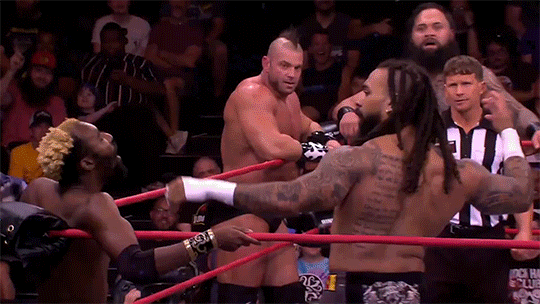
he was in danger it had to be done.
8 notes
·
View notes
Photo
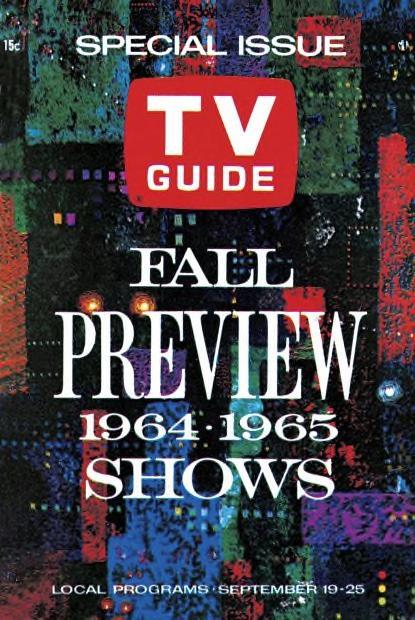
TV Guide - September 19 - 25, 1964
Fall Preview: 1964 - 1965 Shows
ABC
12 O'Clock High (September 18, 1964 – January 13, 1967)
ABC Scope (November 11, 1964 – March 2, 1968)
The Addams Family (September 18, 1964 – April 8, 1966)
Bewitched (September 17, 1964 – March 25, 1972)
The Bing Crosby Show (September 14, 1964 – April 19, 1965)
Broadside (September 20, 1964 – May 2, 1965)
F.D.R. (January 8, 1965 - July 23, 1965)
Jonny Quest (September 18, 1964 – March 11, 1965)
The King Family Show (January 23, 1965 – September 10, 1969)
Mickey (September 16, 1964 – January 13, 1965)
No Time for Sergeants (September 14, 1964 – May 3, 1965)
Peyton Place (September 15, 1964 – June 2, 1969)
Shindig! (September 16, 1964 – January 8, 1966)
The Tycoon (September 15, 1964 – April 27, 1965)
Valentine's Day (September 18, 1964 – May 7, 1965)
Voyage to the Bottom of the Sea (September 14, 1964 – March 31, 1968)
Wendy and Me (September 14, 1964 – May 24, 1965)
CBS
The Baileys of Balboa (September 24, 1964 – April 1, 1965)
The Cara Williams Show (September 23, 1964 – April 21, 1965)
The Celebrity Game (April 6, 1964 - September 13, 1964 / April 8, 1965 - September 9, 1965)
The Entertainers (September 25, 1964 –March 27, 1965)
Fanfare (June 19, 1965 - September 11, 1965)
For the People (January 31 – May 9, 1965)
Gilligan's Island (September 26, 1964 – April 17, 1967)
Gomer Pyle, U.S.M.C. (September 25, 1964 – May 2, 1969)
Many Happy Returns (September 21, 1964 – April 12, 1965)
Mr. Broadway (September 26 – December 26, 1964)
The Munsters (September 24, 1964 – May 12, 1966)
My Living Doll (September 27, 1964 – March 17, 1965)
On Broadway Tonight (July 8, 1964 - March 12, 1965)
Our Private World (May 5 – September 10, 1965)
The Reporter (September 25 – December 18, 1964)
World War One (September 22, 1964 - April 18, 1965)
NBC
90 Bristol Court (October 5, 1964 - January 4, 1965)
Branded (January 24, 1965 – September 4, 1966)
Cloak of Mystery (May 11 - August 8, 1965)
Daniel Boone (September 24, 1964 – May 7, 1970)
The Famous Adventures of Mr. Magoo (September 19, 1964 – April 24, 1965)
Flipper (September 19, 1964 – April 15, 1967)
Harris Against the World (October 5, 1964 - January 4, 1965)
Hullabaloo (January 12, 1965 – August 29, 1966)
International Showtime (September 15, 1961 - September 10, 1965)
Karen (October 5, 1964 – April 19, 1965)
Kentucky Jones (September 19, 1964 – April 10, 1965)
The Man from U.N.C.L.E. (September 22, 1964 – January 15, 1968)
Moment of Fear (May 19 - September 15, 1964 / 25 May 25 - August 10, 1965)
NBC Wednesday Night at the Movies (September 16, 1964 - September 8, 1965)
Profiles in Courage (November 8, 1964 – May 9, 1965)
The Rogues (September 13, 1964 – April 18, 1965)
Tom, Dick and Mary (October 5, 1964 - January 4, 1965)
30 notes
·
View notes
Text
A Smallish Masterpost On The Doctor And Asexuality/Aromanticism
Back in 2019 I apparently made this post about The Doctor and asexuality and aromanticism on my other blog and I have nooo memory of it. so, updated version that's got a bit more going for it:
A small masterpost of various people talking about The Doctor's "Asexuality" - feat. asexuality, aromanticism, demisexuality, demiromanticism, allosexuality, alloromanticism, and a whole squiggly set of queer concepts, as well as discussions about sexism
NOTE: additions are welcome, and forgive the rambles
So classic!who presented the Doctor as a type of asexual, in which the asexuality was a facet of alienness, rather than necessarily based in any community identification of the label -- in the real world, there's documentation of the word asexual since at least the early 1900s (so in tandem with the increasing use of homo, bi, and heterosexual, if not as widespread), as well as overlaps with other communities and labels, such as bisexual and lesbian communities (which both include/d ace people), dandyism, etc. -- so a rich, complex history bubbling beneath all of this (the most famous coining of asexual is in I believe a manifesto from 1978 off the top of my head)
this real world stuff was not what was going on in the world of Doctor Who when it was called Asexual as far as I'm aware - although, I mean... I'm sure there were actual ace and aro fans...? - but it's interesting to know that it was definitely going on, and so no matter what the intent was (alienness, the doctor intended as patriarchal/teacher-like, the doctor intended as for children, etcetc) there is some real overlap with actual asexuality at the time, including within the word itself
and then a bunch of people got really pissed off when the Eighth Doctor broke the rule that the Doctor must always be totally disconnected from romance- waaait but that's not asexuality. And yeah, that's the other thing. Asexuality is used interchangeably as being both aromanticism and asexuality and aroaceness, because people just don't know better- we'll try to make distinctions, but it can be difficult, with how others were conflating, so be Prepared for that in below
in Nu!Who the doctor seemingly got a bit friskier, so let's take a look at that as well
1. First some general Doctor Who – the first asexual Doctors:
The question of the Doctor's sexuality was a controversial one. It was fanon for decades that he was asexual; fans used the Fourth Doctor's line in City of Death that Countess Scarlioni was "probably" beautiful as proof. Sixth Doctor actor Colin Baker agreed with this theory, saying, "Love is a human emotion and the Doctor isn't human." (REF: The Television Companion) Both Matt Smith[6] and Tom Baker (DOC: Getting Blood from the Stones) have identified that their respective Doctors are asexual and clueless to human sexuality; both exploited this for visual humour
(note: Steven Moffat made the comment that the eighth doctor “hit puberty” which were very controversial, but Moffat has often made controversial statements in regards to asexuality, suggesting that he finds it “boring” to write in relation to Sherlock Holmest:
It’s the choice of a monk, not the choice of an asexual. If he was asexual, there would be no tension in that, no fun in that – it’s someone who abstains who’s interesting
(it's ironic that Sherlock Holmes is his other show considering Holmes himself as an asexual icon being sexualised more and more in recent iterations -- but also that arguably Elementary's Sherlock was kind of aromantic and allosexual, which is a Very Very Rare Thing To Write)
These gifs of Colin Baker and Sylvester McCoy pretty much sum up the idea of classic!who smooching People
CB: He's an alien, so what's he doing messing around with human women for? For heavens sake
SM: You know Doctor Who had been very successful for 30 year without canoodling anywhere
Both of these have a tad of the "asexuality is for aliens" + "allosexuality as a whole is not for this show" (which isn't quiiite true, considering the objectification of several of the companions, who did canoodle with some people... just not the doctor)
youtube
This video is a great little rundown of the queer history of Doctor Who and includes this nugget from Steven Moffat back in the day of Discourse around the Eighth Doctor being a bit less Asexual than previous incarnations:
"What on Earth (or elsewhere) is the fuss about the Dr snogging his companion? Nowhere in the series does it *ever* state that the Doc is asexual (it's purely an assumption on the part of the fans) and the fact that he has a a grandaughter might lead the pedants among us to conclude otherwise (and no it wasn't a term of affection - that's just another assumption and an entirely baseless one at that.)
We know that humans and Time Lords are mutually sexually attracted (Susan and Whats-his-name, Leela and Thingummy, The Doctor and that-Aztec-woman) and that the Dr favours bimbos in mini-skirts (what, you think he was choosing them for their brains?) The most you could conclude from watching the show is that he's a little reticent about involvement (not surprising when your inability for commitment extends to your entire home planet!)
So if the Doc's vow of celibacy is a fan assumption which flies directly in the face of the established continuity, why would you think a new series would pay any heed to it?
Steven Moffat
P.S. I mean, the guy has one snog in thirty years of saving our planet and you're all complaining! You utter, utter bastards!!
I think what's also interesting about this comment is the inevitable link between allosexuality and sexism that also exists in Steven Moffat's tenure as showrunner. how does one show a [man] into a [woman?] By making her wear short skirts and having the dude make comments about it of course
Also very funny it actually hits upon a very good point -- there are allosexual Timelords (I'd disagree about the Doctor and that-Aztec-woman) (second note here about how even in this message it's kind of clear how secondary romance was for DW, the romantic partners are Not memorable characters), so if the Doctor is sort of... not like the other Timelords, then the asexuality and aromanticism is not alien... it's the Doctor
2. A bit about the show's attitude towards writing the Doctor as asexual and how that interest has waned over the years:
But that was then and this is now, and the discussion over whether or not the Doctor is still an asexual character has certainly become very heated. Many fans have asked whether or not the Doctor can still be considered asexual, given the nature of the current show. John Richards, in a brilliant and surprisingly funny essay for Queers Dig Time Lords titled “The Heterosexual Agenda,” lamented the aggressive assertion of the Doctor’s heterosexuality
youtube
This is the Confidential episode around The Girl In The Fireplace around the Doctor and "snogging" and ways in which fans might read it (fans can "explain it away" as "she kissed him")
In it we get a bit more about Moffat's whole... deal... around women and the Doctor. It's interesting because he argues that it works because Madame de Pompadour is a "match" for the Doctor due to being well-educated and civilised and multi-talented... "if the Doctor was going to settle down, it would be a girl like this," in the season in which one might argue the main romance is with Rose, a working-class woman who never finished highschool
so a bit about the ways sexism, classism, and heteronormativity also play into the writing of a "more allosexual" Doctor...
It also includes DT saying they had an extraordinary relationship that was over before it began -- I just like how he refers to it without attempting to label it
the framing of the confidential episode is very romantic, just so you're prepared. It also has more unintentional framing of the Doctor's potentially "falling in love" as a more "human" emotion (in contrast to alien emotions of not falling in love)
as you can hear, it conflates allosexuality and alloromanticism throughout
3. Eleven, He's A Little Confused But He's.... kinda? Got the Spirit (and an unfortunate slice of sexism/heteronormativity):
One thing has been a constant, though — the Doctor himself has been entirely asexual, save for the notorious on-screen kiss during Paul McGann’s performance as the Eighth Doctor in the one-off special made during the show’s wilderness years, a kiss that had fans outraged precisely because it was so out of character and proved that the producers behind the telemovie had no idea what they were doing.
It’s interesting how recent Doctor Who has, if anything, emphasized this idea of the Doctor’s asexuality; Matt Smith said earlier this year that his version of the character was “more asexual than some of the others,” and in 2011 he answered a question about whether his version of the Doctor is at all interested in sex as follows: “No. The Doc’s idea of an orgy is playing chess with an ostrich. His brain doesn’t work in that way. He would find it weird and peculiar. He finds women peculiar. He is quite asexual.”
The idea that the Doctor “finds women peculiar” is probably one that says more about Matt Smith than it does about the Doctor’s character — 30 years of Doctor Who history rather contradict the idea that the Doctor finds women any stranger than men, and in general he has been characterized by his enduring affection for humanity in general, regardless of gender.
In general the way people talk about Matt Smith’s doctor to me, often has a bit of infantilisation along with it - of course we can read him as ace, because he’s boyish, hyperactive, and distracted... he's weird and alien
youtube
There's also this cute little fan-video that has some Nine, Ten, and Twelve but is mainly focusing on Eleven's asexual Vibes in a couple of scenes, which actually is something I've always struggled a little more with, because Moffat had Eleven doing sexist shit occasionally and was also soooo male-gazey, but it's also got one of my favourite ace moments for the Doctor period ("I WAS NOT EXPECTING THIS!????")
(the scenes with Amy in this exemplifies so much of what I dislike about Moffat, but it's also fascinatingly The Tightrope Of Asexuality -- Amy is essentially violating the Doctor's consent over and over, but it's fine because "he's" a "bloke" -- she then goes on to show the Doctor's former companions on screen.... but notably only the women, and making a biiig mistake in including I think both Zoe and Ace, who were teenagers when they travelled with the Doctor... implying that that was... idek......)
I will also acknowledge here that while I don't think Moffat ever got... super comfortable writing queerness, he did get much, much better and stopped constantly referring to the doctor as a "bloke," who does bloke-y things (like objectify women, care too much about machinery/the TARDIS, and be a playboy who whisks away young girls in order to seduce them, I guess?)
and I personally think that the gender component plays into the Doctor's increased asexual vibes in his run (which is ironic considering where Moffat started lol), but I'd have to do wa-HAY more of a deep dive to actually confirm that... just a theory.... but also interesting that asexuality and aromanticism is more fine, because the Doctor is not a bloke......
it's complicated
4. Ten, The Jessica Rabbit Effect (just because you think they're hot doesn't mean they want to fuck)
[Patrick Troughton and Sylvester McCoy] would hardly have been much cop as Casanova; the 2005 TV role for which Tennant won much praise. Perhaps that's why the Times christened him "the first Timephwoard". "That's the Times?" he boggles. "It's, er, quite surprising..." Or why the Pink Paper voted him the Sexiest Man In The Universe, above Brad Pitt and David Beckham.
in general, it seems unequivocal to me that ten doesn’t like getting hit on, even playfully [...] not only does he seem consistently uninterested in these advances, but in most cases, a bit confused and/or unsettled by the idea of being hit on by anyone. contrary to the ‘space casanova’ narrative frequently espoused by magazines and interviewers, in reality ten is no stud. far from it. apart from with rose, he never reciprocates flirtatious behavior, nor does he ever seem pleased to be on the receiving end of it.
https://tenscupcake.tumblr.com/post/126914939560/dunderklumpen-that-smug-face-needs-to-be
[Link to a gifset in which The Witch in The Shakespeare Code tries to seduce the Doctor and he answers “now that’s one form of magic that definitely won’t work on me.
the second/third/fourth gifs are of David T saying: “she nearly kisses me. I don’t nearly kiss her. It’s an important distinction.”
youtube
This interview is around the time the final RTD/DT episodes were beginning to air
Interviewer: Lots of snogging you've done, there was-
DT: Not lots
Interviewer: More- I'm trying to think now I don't remember any of the previous doctors-
DT: More than Jon Pertwee did, yes
Interviewer: Yes a lot more than Jon Pertwee... what-how come...?
DT: I can't help it if the ladies of the Universe are flinging themselves at me, you know? Its not, you know, it's just part of the job I have- It's- usually it's not a sexual thing with the Doctor. He's a fairly asexual character.
Interviewer: So what's with the kissing then?
DT: Well, I don't think- there's a genetic transfer as it was once... or, and you know these women just can't help themselves, I don't know-
5. 12, Too Old To Be Romantic?
Capaldi talking about his relationship with Clara, noting the age-difference as reasons why they would never be a romantic couple (the subtext here is non-sexual as well, although it conflates the two).
https://www.theguardian.com/media/2015/sep/15/doctor-who-needs-lots-more-kissing-according-to-peter-capaldi
[Capaldi] said there was “no romance, but deep love” between the Doctor and Clara, played by Jenna Coleman.
“It would have been completely creepy,” the star told the Radio Times. “It’s fine if you have handsome young men like Matt [Smith] and David Tennant, but as a father I felt it would be inappropriate.
Capaldi laughed off complaints that his first full episode last year was promoting a gay agenda after it featured a kiss between a lizard woman and her human wife. “I think it was good,” he said.
“Actually it’s not just lesbian. It’s across species, which is even worse, presumably. It’s crazy if people get up in arms about it. There should be lots more kissing in Doctor Who. So long as it’s not the Doctor and Clara.”
Honestly I wonder how much the hype died down because he was no longer young and "hot." Skill issue honestly
6. The Doctor and The Master/Missy
I feel like I don't have enough on this, and that's also a facet of the whole "is the Doctor now allosexual and alloromantic." It seems to only really come up in relation to the [seemingly] het relationships
I don't really see much in relation to the Doctor and Jack (who's canonically in love with the Doctor) or the Doctor and Simm's Master -- I mean, fanfic, yes, but not bigger article-worthy discussion...
(and Jamie and the Doctor and Adric and the Doctor and Alan Turing and the Doctor......)
so if anyone has a bit to add on that
Most of it is in relation to... Moffat's sexier "Missy." (sigh). However very interested in what Michelle Gomez (who was excellent as the character!) had to say about it:
She added a female time lord "blows open all these new possibilities for different relationship that couldn't have happened before" but denied the idea of sexual chemistry between Missy and the Doctor.
"You're reading into it something I've never even thought of," she said.
The Scottish star added: "With [the Doctor’s young companion] Clara, it would have been straight away, ‘What is the romantic connection, does the Master fancy her?’ No. We can move past that, into something much more interesting, much more detailed, which is life. That’s what life is. It’s not all black and white."
Idk, she seems to get something intrinsic about the possibilities of all this that many others don't
Gifset of The Mistress (being questioned by Clara on the nature of Missy’s/the Doctor’s relationship): Try, nanobrain, to rise above the reproductive frenzy of your noisy little food chain and contemplate friendship.
I find the whole post quite charming actually, it's a small moment in Doctor Who fandom from a specific person. I don't even remember how I originally found it
7. Misc
I don't really have anything on Thirteen currently, because I haven't seen all of those seasons yet. I know Yaz/Thirteen is very shipped, I assume I'll prooobably feel similarly to all the other Doctor/Companion ships in that I'll be going at it from an aromantic lens
I have seen discussions about how the Doctor’s perceived romantic and/or sexual relationship with this person or other (insert your preferred person here, Rose, Madame de Pompadour, River…) has made him too human, too normal. Discussions that assume that romantic and sexual attraction is an inherent part of human experience, so removing them from a character makes him alien.
This is about the way "Asexuality" (meaning aroaceness) applied purely to alien creatures isn't... great... for aroace people
I have lost count of the number of times I’ve heard fans discuss wanting a more alien “asexual Doctor”, which is generally taken to mean “no romance in the Tardis.”
It often goes back to the same questions: is the Doctor's "Asexuality" (that is, asexuality and aromanticism) purely used to indicate the alien? When John Smith is human he falls in love and asks "what sort of a man" the Doctor is that falling in love didn't occur to him. Many classic actors (whom I have a great deal of affection for) tend to use alien as the reason for the so-called Asexuality, and that seems to lie at a lot of the fans discomfort with a more "sexy" Doctor of nu!who, rather than anything to do with character or portraying asexuality and aromanticism in sci-fi
and on the flipside, people who very much like an alloromantic and allosexual Doctor dismiss aroace Doctor reads because of things that are absolutely within the purview of an aroace experience (I've seen anything from having a grandkid to being hot to caring about others to knowing what sex is)
I wonder if actually consciously writing an aroace Doctor would make people really uncomfortable as well, since it would remove the "alienness" from the idea of it... also it would make people who really really like allosexual and alloromantic Doctor angry too... so no winning I guess
I wonder how Ncuti Gatwa alongside RTD's queerness will redefine the subtext of it all once again...
#doctor who#dw#the doctor#david tennant#matt smith#peter capaldi#nu!who#classic!who#aphobia#asexual doctor#aromantic doctor#aroace doctor#the tenth doctor#the eleventh doctor#the twelfth doctor#aspec doctor
88 notes
·
View notes
Photo

Why is the MetLife Building famous?
MetLife Building
It was advertised as the world's largest commercial office space by square footage at its opening, with 2.4 million square feet (220,000 m2) of usable office space. As of November 2022, the MetLife Building remains one of the 100 tallest buildings in the United States.
Can you enter the MetLife Building?
You can enter The MetLife Building from anywhere in Grand Central Station but the entrance closest to The Metlife Building entrance is on 45th Street between Lexington and Vanderbilt.
What offices are in the MetLife Building?
In addition to being the official headquarters of the Metropolitan Life Insurance Company, the MetLife Building houses a number of other major firms, including the headquarters of Dreyfus Corporation, Knight Vinke, the wealth and investment management division of Barclays, the largest office of Greenberg Traurig, DNB, CB Richard Ellis, Gibson, Dunn & Crutcher, Hunton & Williams, Computer Sciences Corporation, Winston & Strawn, Paul Hastings, and Lend Lease Corporation on Level 9. In addition the building serves as the U.S. Headquarters for Mitsui & Co. (USA) Inc, the American subsidiary of Japan’s largest trading company, BNP Paribas Investment Partners and its American subsidiary Fischer, Francis, Trees and Watts.
NOAA Weather Radio Station KWO35, a NOAA transmitter station, is located atop the building.
Impressive tenant roster includes:
There are about 400 tenants throughout Graybar’s 31 floors
Bank of America
Barclays
Bovis Lend Lease
CB Richard Ellis
CSC (Computer Software Corp)
DNB Nord Bank
Fischer Francis Trees & Watts
Hunton & Williams
IgnitionOne
Korn Ferry International
Magnitude Capital
CBRE Global Investors
Merrill Lynch
Dreyfus Corporation
MetLife
Met Life
Gibson Dunn
Novus Partners
Mitsui & Co.
Gibson Dunn & Crutcher
Swarovski
BNY Mellon
Paul Hastings
Winston & Strawn
Federal Home Loan Mortgage Corporation
UBS
J. Fitzgibbons
Metropolitan Life Insurance Company
Preferred Office Properties
Freddie Mac
Oppenheimer & Co.
Nor Bank ASA
Mitsui
Carr Workplaces
Medical Properties Trust
#New York City#new york#newyork#New-York#nyc#NY#Manhattan#urban#city#USA#United States#buildings#travel#journey#outdoors#street#architecture#visit-new-york.tumblr.com#MetLife Building#MetLife
144 notes
·
View notes
Photo
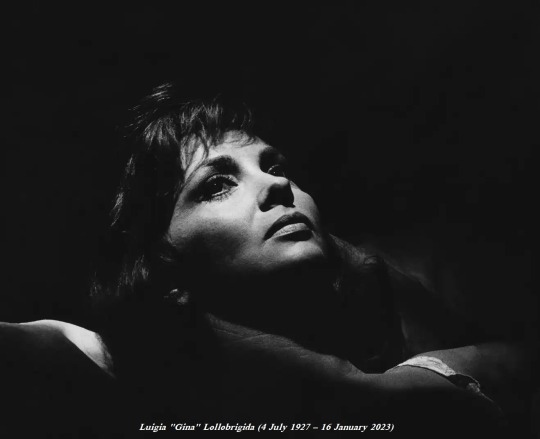







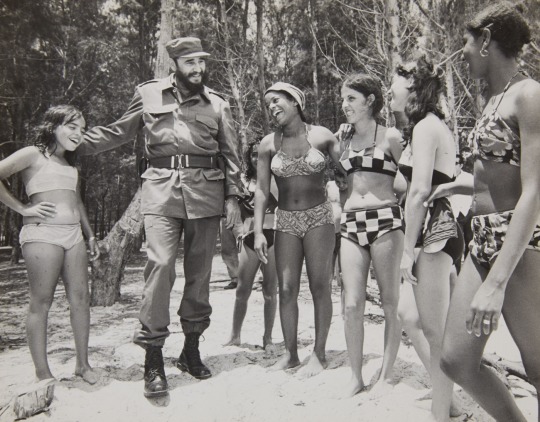
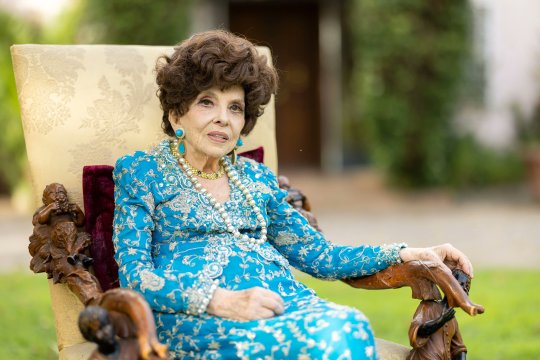
Ms Luigia "Gina" Lollobrigida OMRI (4 July 1927 – 16 January 2023)
Destined to be called "The Most Beautiful Woman in the World", Ms Lollobrigida was the daughter of a furniture manufacturer, and grew up in the pictorial mountain village. She studied sculpture at Rome’s Academy of Fine Arts, and started her career with minor Italian film roles before coming third in 1947’s Miss Italia pageant.
After refusing a contract with Howard Hughes to make three pictures in the United States in 1950, Ms Lollobrigida gained for starring turns in 1952’s “Fanfan la Tulipe” and 1953’s “Bread, Love and Dreams,” the latter of which netted her a BAFTA nomination for Best Foreign Actress.
Ms Lollobrigida’s first American film was “Beat the Devil,” a 1953 adventure comedy directed by John Huston that cast her opposite Humphrey Bogart. Over the course of the ’50s and ’60s, she starred in numerous French, Italian and European-shot American productions, with highlights including “Trapeze” with Burt Lancaster and Tony Curtis, “The Hunchback of Notre Dame” as Esmerelda, “Solomon and Sheba” with Yul Brynner, “Never So Flew” with Frank Sinatra and Steve McQueen, “Come September” with Rock Hudson, and “Woman of Straw” with Sean Connery, and “Buona Sera, Mrs. Campbell,” with Shelley Winters.
Her roles made her a major sex symbol of Italian cinema; in 1953, she won Italy’s David di Donatello award for Best Actress for her performance in the opera star Lina Cavalieri’s biopic “Beautiful But Dangerous,” known in Italian as “The World’s Most Beautiful Woman.”
She later won two more David di Donatello Award for “Imperial Venus” and “Buona Sera, Mrs. Campbell,” a Golden Medal of the City of Rome in 1986, a 40th Anniversary David in 1996 and a 50th Anniversary David in 2006. In 1961, she won the Golden Globes’ Henrietta Award for “World Fan Favorite,” and received nominations for “Falcon Crest” and “Buona Sera, Mrs. Campbell.”
After the ’60s, Lollobrigida’s career began to slow down, but she continued to act intermittently, including in the 1995 Agnes Varda film “Les cent et une nuits de Simon Cinéma,” and in ’80s TV shows such as CBS’ “Falcon Crest” and ABC’s “The Love Boat.”
Ms Lollobrigida also developed a successful second career in photojournalism during the ’80s. She obtained an exclusive interview with Cuban leader Fidel Castro and also photographed many famous film stars, as well as publishing a number of books of her photographs.
In 2011 she made her final film appearance, playing herself in a cameo for the Italian parody film “Box Office 3D: The Filmest of Films.”
The screen legend sale of some of her 23 jewels from her Bulgari collection at Sotheby’s in 2013 to help fund an international hospital for stem-cell research.
On 16 October 1999, Lollobrigida was nominated as a Goodwill Ambassador of the UN Food and Agriculture Organization
Ms Lollobrigida won the Berlinale Camera at the Berlin Film Festival in 1986, Karlovy Vary Film Festival special prize in 1995, and the Rome Festival’s career prize in 2008. In 2018, she received a star on the Hollywood Walk of Fame.
Ciao, Gina, Riposa in Pace
(Armando Pietrangeli, “Light and Shadow,” Gina Lollobrigida,1960, Trapeze 1956, Woman Of Rome,1954, Salomon & Sheba,1959, Come September, 1961,Un Bellissimo Novembre,1968, The Hunchback of Notre Dame,1956, In London to publicise her book of photographs titled Italia Mia,1974, Fidel Castro shot by Ms Lollobrigida,1974, Gina Lollobrigida pictured on July 11, 2022 in Rome).
#art#movirs#film#legend#gina lollobrigida#rip#rip gina lollobrigida#agnes varda#rock hudson#ciao#photography#icon#holywood#italy#falcon cest#the love boat#Esmeralda#yul brynner#howard hughes#paul newman#fidel castro#tony curtis#sheba#the hunchback of notre dame#trapeze#bafta#burt lancaster#frank sinatra#golden age#UN
289 notes
·
View notes
Text
Visit the original article to click through to the entire list - PASS IT ON
Lesson 1: Kemet
Ancient Egyptians called their land "Kemet"--or Black Land. The first person to practice medicine was from Kemet, along with the first dentist! 29 Black History Facts You Probably Didn't Learn at School: Lesson 1 01:10
Lesson 2: Shotgun homes and front porches
The shotgun home and front porch design originated in West Africa in what is now Nigeria. 29 Black History Facts You Probably Didn't Learn at School: Lesson 2 01:07
Lesson 3: Walls of Benin
The Walls of Benin were four times longer than the Great Wall of China. So, what happened to them? 29 Black History Facts You Probably Didn't Learn at School: Lesson 3 01:10
Lesson 4: University of Sankore
One of the first universities in the world was located in Mali. 29 Black History Facts You Probably Didn't Learn at School: Lesson 4 01:07
Lesson 5: 1526
The year 1619 is known as the year that Blacks were first enslaved in America. What about the year 1526? 29 Black History Facts You Probably Didn't Learn at School: Lesson 5 01:10
Lesson 6: Freedom by any means
How braided hair, Gospel music, and drums played a role in the liberation of Blacks. 29 Black History Facts You Probably Didn't Learn at School: Lesson 6 01:06
Lesson 7: Benjamin Banneker
Meet the man who helped design Washington, D.C., and that's not all. 29 Black History Facts You Probably Didn't Learn at School: Lesson 7 01:07
Lesson 8: Queen Nanny of the Maroons
She was like Harriet Tubman, but she freed slaves someplace else. 29 Black History Facts You Probably Didn't Learn at School: Lesson 8 01:05
Lesson 9: Henry "Box" Brown
Learn more about how Henry Brown got his nickname. It's incredible. 29 Black History Facts You Probably Didn't Learn at School: Lesson 9 01:10
Lesson 10: Henrietta Bowers
Learn how this undertaker used her background to free Black slaves. 29 Black History Facts You Probably Didn't Learn at School: Lesson 10 01:06
Lesson 11: John Berry Meachum
Learn more about the "Floating Freedom School" and why Meachum had to put it on a boat. 29 Black History Facts You Probably Didn't Learn at School: Lesson 11 01:04
Lesson 12: Lewis Latimer
How Louis Latimer made one of Thomas Edison's famous inventions better. 29 Black History Facts You Probably Didn't Learn at School: Lesson 12 01:00
Lesson 13: Granville T. Woods
How modern wireless technology can be traced back to Granville Woods in the 1800s. 29 Black History Facts You Probably Didn't Learn at School: Lesson 13 01:06
Lesson 14: Oscar Micheaux
The man who paved the way for today's great Black filmmakers. 29 Black History Facts You Probably Didn't Learn at School: Lesson 14 01:02
Lesson 15: Marie Van Brittan Brown
Those Ring cameras are everywhere. It basically started with Marie Van Brittan Brown's invention in the 1960s. 29 Black History Facts You Probably Didn't Learn at School: Lesson 15 01:02
24 notes
·
View notes
Text
JJ and Kealia Watt ‘Hope It Works Out’ for Taylor Swift and Travis Kelce: ‘Happy for Them’ (Exclusive)
"I think it just shows how amazing she is," Kealia, 31, says of Swift's impact on the NFL after the singer cheered for Travis Kelce at Arrowhead Stadium on Sunday. According to FOX Sports, the game was the week’s highest-rated telecast on any network, with 24.3 million viewers.
"She's an icon, She's the most famous person in the world, probably. So I think it just shows what a badass she is," Kealia tells PEOPLE.
JJ, currently an NFL analyst for CBS Sports, says the fan frenzy over Swift's rumored romance with the Chiefs star is "two mega worlds colliding."
The former Arizona Cardinal says, "I think the ratings are going to go even higher every single week for the Chiefs games, which is hard because they were already one of the best teams in the league."
JJ adds, "It's exciting. I'm happy for them and hope it all works out."
36 notes
·
View notes
Text
Celebrating the History of the Stonewall Riots

June 28th 2024 was the 55th anniversary of the Stonewall Riots in New York City, a turning point event often seen as the birth of the modern gay rights movement. To celebrate, we’ve assembled a short list of our favorite non-fiction books about queer activism – plus two websites that are good resources as well! The contributors to this list are Kelas, Meera S., E. C., Tris Lawrence, and three anonymous contributors.
-
And Then I Danced: Traveling the Road to LGBT Equality by Mark Segal
On December 11, 1973, Mark Segal disrupted a live broadcast of the CBS Evening News when he sat on the desk directly between the camera and news anchor Walter Cronkite, yelling, “Gays protest CBS prejudice ” He was wrestled to the studio floor by the stagehands on live national television, thus ending LGBT invisibility. But this one victory left many more battles to fight, and creativity was required to find a way to challenge stereotypes surrounding the LGBT community. Mark Segal’s job, as he saw it, was to show the nation who gay people are: our sons, daughters, fathers, and mothers.
Because of activists like Mark Segal, whose life work is dramatically detailed in this poignant and important memoir, today there are openly LGBT people working in the White House and throughout corporate America. An entire community of gay world citizens is now finding the voice that they need to become visible.
-
Whipping Girl: A Transsexual Woman on Sexism and the Scapegoating of Femininity by Julia Serano
A provocative manifesto, Whipping Girl tells the powerful story of Julia Serano, a transsexual woman whose supremely intelligent writing reflects her diverse background as a lesbian transgender activist and professional biologist. Serano shares her experiences and observations—both pre- and post-transition—to reveal the ways in which fear, suspicion, and dismissiveness toward femininity shape our societal attitudes toward trans women, as well as gender and sexuality as a whole.
Serano’s well-honed arguments stem from her ability to bridge the gap between the often-disparate biological and social perspectives on gender. She exposes how deep-rooted the cultural belief is that femininity is frivolous, weak, and passive, and how this “feminine” weakness exists only to attract and appease male desire.
In addition to debunking popular misconceptions about transsexuality, Serano makes the case that today’s feminists and transgender activist must work to embrace and empower femininity—in all of its wondrous forms.
-
Transgender Warriors: Making History from Joan of Arc to Dennis Rodman by Leslie Feinberg
In this fascinating, personal journey hrough history, Leslie Feinberg uncovers persuasive evidence that there have always been people who crossed the cultural boundaries of gender. Transgender Warriors is an eye-opening jaunt through the history of gender expression and a powerful testament to the rebellious spirit.
-
Bi Any Other Name: Bisexual People Speak Out by Loraine Hutchins and Lani Ka’ahumanu
In this groundbreaking anthology, more than seventy women and men from all walks of life describe their lives as bisexuals in prose, poetry, art, and essays
-
Queer Budapest, 1873–1961 by Anita Kurimay
By the dawn of the twentieth century, Budapest was a burgeoning cosmopolitan metropolis. Known at the time as the “Pearl of the Danube,” it boasted some of Europe’s most innovative architectural and cultural achievements, and its growing middle class was committed to advancing the city’s liberal politics and making it an intellectual and commercial crossroads between East and West. In addition, as historian Anita Kurimay reveals, fin-de-si cle Budapest was also famous for its boisterous public sexual culture, including a robust gay subculture. Queer Budapest is the riveting story of nonnormative sexualities in Hungary as they were understood, experienced, and policed between the birth of the capital as a unified metropolis in 1873 and the decriminalization of male homosexual acts in 1961.
Kurimay explores how and why a series of illiberal Hungarian regimes came to regulate but also tolerate and protect queer life. She also explains how the precarious coexistence between the illiberal state and queer community ended abruptly at the close of World War II. A stunning reappraisal of sexuality’s political implications, Queer Budapest recuperates queer communities as an integral part of Hungary’s–and Europe’s–modern incarnation.
-
The Stonewall Reader by New York Public Library
June 28, 2019 marks the fiftieth anniversary of the Stonewall uprising, which is considered the most significant event in the gay liberation movement, and the catalyst for the modern fight for LGBTQ rights in the United States. Drawing from the New York Public Library’s archives, The Stonewall Reader is a collection of first accounts, diaries, periodic literature, and articles from LGBTQ magazines and newspapers that documented both the years leading up to and the years following the riots. Most importantly the anthology spotlights both iconic activists who were pivotal in the movement, such as Sylvia Rivera, co-founder of Street Transvestites Action Revolutionaries (STAR), as well as forgotten figures like Ernestine Eckstein, one of the few out, African American, lesbian activists in the 1960s. The anthology focuses on the events of 1969, the five years before, and the five years after. Jason Baumann, the NYPL coordinator of humanities and LGBTQ collections, has edited and introduced the volume to coincide with the NYPL exhibition he has curated on the Stonewall uprising and gay liberation movement of 1969.
-
Bonus – Two Great Websites:
Stonewall National Museum Archives & Library
Making Queer History
-
View this list, and our other queer non-fiction book recs, as a shelf on Goodreads!
See a book you need to own? Buy it through our affiliate shop on Bookshop.org!
#duck prints press#stonewall#stonewall riots#queer history#queer nonfiction#rec list#book recommendations#queer books#queer books recommendations
6 notes
·
View notes
Text
Made this up last month for some peeps on Discord but here's the full deets:
Rusted Brakes Nutcracker AU
"Once upon a time in the land of toys and fantastical winters, was a little prince. The little prince loved playing with toy trains and loved to show them off. His mother warned him that boasting about his treasured trains made of gold and pearls would earn him the ire of other kingdoms but he did not listen. One day, the horrid Rat Queen grew jealous of such novelties and decided to steal them to play with them herself...
"Enraged, the little prince ordered the three best of his knights to go after his trains: His burly champion of gold and black leather, his most famous of wires and electricity, and his knight of the people he barely paid much attention to. The champion could part the waves of the rat minions with a single swing of his sword but was grievously wounded by all three of the Rat Queen's heads. The electrical knight was more cunning and offered to trade the trains for any other amount of riches but was thrown out of the castle with his makeup ruined...
"Yet, the third knight skillfully crept into the enemy's castle and was able to sneak all the way into the treasury. He secured the trains and was able to make off back to the castle with the little prince's most treasured belongings. However, what nobody but the Rat Queen knew is that she had put a powerful curse upon the glittering toys. To whoever were to take the toy trains from under her three noses were to become an enchanted nutcracker...
"Upon the third knight's return to his home and the toys given back, he fell to the floor with a clack and became a wooden doll with strong jaws. The little prince had no idea what to do as he was happy now that his trains were back and had no use for a nutcracker...
"The nutcracker ran away in the dead of night. No one has seen him since. With an angered Rat Queen causing turmoil and a kingdom in disarray as their little prince plays with his trains once more, it might take a miracle or some winter magic to get things back to normal...
"...just be careful, as there are many truths that may be hidden within this storybook fantasy."
Rusty the Knight of Rust and Smoke:

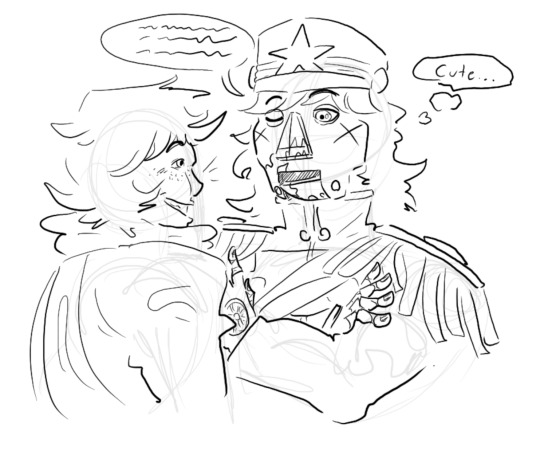
Rusty was the third knight!
He wasn't really looked fondly upon due to his rusting and how he was favored by the people of the Toy Kingdom.
He ran away since no one seemed to be able to help him figure out how to get him back to his real form and he was already getting teased for it by Greaseball and Electra. Rusty lives on the edges of the winter kingdoms and does his best to thwat the rats and their plans.
Rusty's the one to yank CB out of danger when stuff starts to go bump in the night at the guy's house and he partners himself up with him since the guy is out of depth as to what the hell all these rats are doing. He's gotta be the one to yank CB away from doing something stupid (flinging himself into battle without any armor).
CB's still caught up on the fact that this weird but beautiful nutcracker he's been gifted for his vintage toy collection has come to life and whisked him away on some adventure on how all rats are the root cause of evil in the world or something. He's ready to unleash a can of whoop-ass with the many hidden tools and knives he has on his person (and tries to keep them hidden when Rusty shakes him down before they enter a settlement of sorts). Despite being a bit of a nuisance, CB thinks Rusty is pretty neat and will try to ask as many questions as to how his wooden toy-ness works exactly.
CB the Knight of Candy and Smiles:

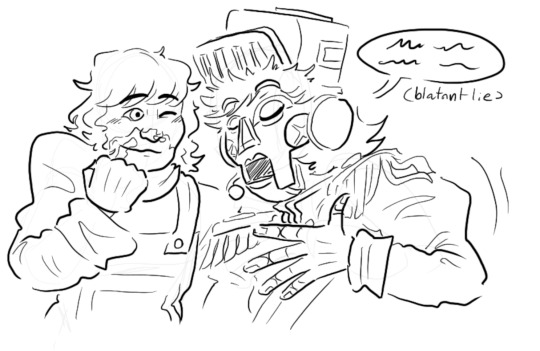
CB was the third knight!
He was favored very highly by Control but the little prince never spared him a second glance due to how 'well-behaved' he was in court.
He ran away since he had self-esteem issues because of above^ CB couldn't bear to be seen as imperfect and thus ran off before his friends got a good look at his face. Maybe Greaseball and Electra would have turned their smirking gazes at him. Nowadays he's on the edges of the kingdoms planting booby traps and tricks a-la Bugs Bunny style.
CB is letting Rusty tag along with him as they venture deeper into Rat Kingdom territory and the conspiracy of the Rat Queen unscrolls itself. CB is more of Rusty's bodyguard and likes to tell him entertaining stories and lies about the winter fantasy world. He's actually pretty surprised how well Rusty is with tools and such and would hate to be on the other end of a power drill within Rusty's hands.
Rusty still thinks this is some kind of nightmare that he really needs to wake up from. His adoptive father figure gave him this kind of creepy nutcracker as an early Christmas gift since it's an heirloom and now it's come to life and quoting late twentieth century pop culture references at him. He kind of finds this endearing, even if there are rat creatures trying to bite his face off. There's a bit of a 'too tired to deal with this' attitude from him as every person in this winter fantasy land loves to monologue and Rusty just wants to go back to sleep.
#mvf art#mvf talks#starlight express au#stex au#sorry it's a shipping au. anyway-#rusted brakes#rusted brakes shipping#rusty the steam engine#cb the red caboose#rusted brakes nutcracker au#i might make more stuff later#if anyone knows me it's that i LOVE nutcracker stories
10 notes
·
View notes
Text
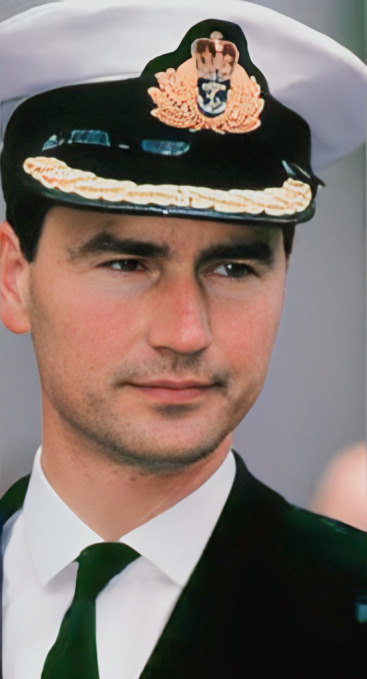
An Interview with Royalty
By Jane Robson | Published 25 March 2013
Interview with Vice Admiral Sir Tim Laurence KCVO CB ADC(P)
An amazing opportunity arose for Castle Court 4R Children to attend an interview with Vice Admiral Sir Tim Laurence at the RNLI Headquarters in Poole, where he is the Chairman of the RNLI Operations Committee. They had spent the spring term developing their journalistic skills as part of their literacy topics, so a chance to practice them on a member of the Royal Family could not be missed!
Charlotte gave the opening speech and asked the first question – “Thank you so much for allowing us to interview you as part of our English Work”.
“May I begin by asking what your links are to the RNLI and how important an organisation it is to you?”
When I was very small, about three years old, I had holidayed at Dungeness in Kent. I was taken to the local Lifeboat station where I remember a big shinny boat and thinking I really wanted to go on it. As you now know, in recent years I have been fortunate to get involved.
Leila: Please can you tell me what you wanted to be when you were our age?
I didn’t know exactly what I wanted to do at your age. I did know that I DID NOT want to work in London, and due to the interest in the sea I signed up with the Navy and have just left after 37 years.
Jimmy: Were you ever naughty and if so what punishments did you get? Were you ever grounded?
I actually can’t remember as I only remember the good things about my time at school. I may have been kept in after school. My sports did keep me out of mischief as I enjoyed football, cricket and tennis.
Tenzing: What are your best memories of school and did you have any scary Teachers?
My best memories from my prep school in Kent are the fact that I had plenty of time for sport and enjoying the Countryside.
As for the scary teachers: the scariest teacher left when I arrived and although there were one or two others, I don’t think they were too bad!
Charlie : What was your favourite sport at school and what is your favourite sport now?
I enjoy all sports. My favourite is cricket. I played with some people who went on to play for their county and England.
I’m too old for some sports now, but I do enjoy sailing and golf.
Joanna: Do you find it strange being a part of the most famous family in the World?
No not strange, I’ve got used to it. I do live two separate lives. One is supporting my wife and the other is supporting my own commitments, such as the RNLI.
Charlotte: Did you think you would grow up to marry a Princess and sit down over a roast dinner with Her Majesty the Queen? Does it ever feel a bit unreal?
No. If someone had told me some years ago I was going to marry a Princess I would have thought they were rather barmy. It actually feels very real and comfortable. I know the Queen as a person, she is warm and friendly, and to me she is my ‘mother- in-law’
Charlotte Gilmour: Do you feel part of the Family?
Definitely. I am an extended part of the Family.
Cosmo: When was the last time you rode a bike? What do you think are the simplest pleasures in life?
I rode a bike at school and university, and cycled a lot when I lived in Winchester but I would NOT ride a bike in London – it is too dangerous for me!
I haven’t ridden a bike for a while, however last summer, when we were staying at Balmoral Castle in Scotland, three of our party decided to ride their bikes to a place where we were having a picnic. They were exhausted when they arrived, so I offered to ride one of the bikes back. It was seven miles, and I was definitely out of practice.
As to the simplest pleasures in life: enjoying the company of friends, the Countryside and getting on with life; doing something interesting.
Taylor: Do you disco dance and what is your favourite music and best dance moves?
It has been a while since I disco danced, but I do enjoy different types of music. I was recently in the USA and for three evenings I listened to Blue Grass Music. I do enjoy modern popular music as well.
My favourite dance? Well, I do enjoy watching ballroom dancing and I regret I didn’t live in an era when it was very popular.
Charlie: Do you have any pets and what are they?
I have a lot of dogs: two English Bull Terriers, four Labradors and two Spaniels
We live on a working farm so we also have sheep, cattle, and pigs.
Charlie: Did you have any unusual pets when you were small?
I had a dog and a Hamster. I do remember Gerald Durral’s book about animals and he said he kept a scorpion in a match box, but I had nothing as unusual as that.
Geen : What makes you really chuckle?
A good joke, and if you see something that goes a bit wrong, a bit like the situations which occur on the Television programme ‘You’ve Been Framed’.
Izzy: What is your favourite food and does Princess Anne cook or a Servant?
I like most foods; any good food and I particularly enjoy food from the farm, particularly our meat and vegetables. However my favourite food is fish.
We do have a cook, but my wife does cook when the cook is not there. She also cooks if we are out on the boat together. II don’t really do any; although I did learn the basic skills of cooking whilst I was at school, so I can cook if I needed to.
Izzy: Do you catch your own fish?
No I don’t.
Mrs Robinson – May I ask if you have been able to train your Bull Terrier, as I could never train mine?
I think you can, we did ours, they are soft and gentle and lovely pets to us.
#i would very much like to thank the wayback machine for serving its purpose#but i never would have been able to succesfully find this again without companionofthetimelords help#i was searching for this using the wayback machine for days but never found it bc i was scanning for the articles in the wrong year#so#companionofthetimelords#thank you so much#you are now very much deserving to operate the tardis#lol 😂#also i just saw that photo of him on google bc the article didn't have one#tim laurence#interview#castle court
93 notes
·
View notes
Text
Thoughts on Strike Force Five

I've always had a respect for late-night talk shows. They're a staple of American culture and are synonymous with classic television. Almost vaudevillian, they're a manicured window into the world of entertainment that for generations has reflected the pulse of the nation.
With the writers' strike lasting all summer, the 5 big late-night hosts, Fallon, Colbert, Kimmel, Meyers, and Oliver jumped on Zoom and made a podcast to support their unemployed staff. It was a noble gesture, whose only flaw was arriving 3 months too late.
They took turns hosting an hour-long podcast where they chatted about their experiences as talk show hosts, how their shows are similar yet differ both in front and behind the cameras, their respective career routes that led them to late night, and even some fun personal life anecdotes.
The stories and convos were fun, hilarious, and often fascinating, but the real meat of the cast was getting to hear their banter. 5 professional funny dudes, gently ribbing each other while clearly maintaining a healthy friendship. The show revealed a lot about each host. Everything from their ability to tell an unscripted story to how quick they are on their feet. Each host has their own strengths and as morbid as this sounds, getting them on a cast together was a unique venue in which to size them up.
Here's what I learned about each host after listening to all 12 episodes of Strike Force Five (insert thunderclap). We'll sort these by Late Night tenure.
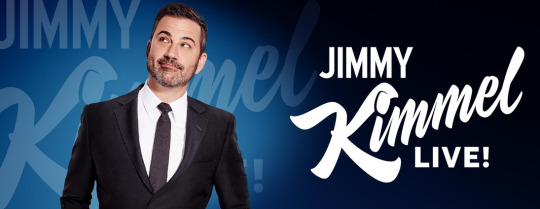
Jimmy Kimmel (2003-present: Jimmy Kimmel Live!)
Oddly enough, Kimmel has been on the air longer than any of his peers and despite being the least naturally funny of the group, seems like the most driven. Not to say that Kimmel isn't funny, he's just not comedian-funny. He is great at long-form jokes, and situational pranks, and some of his more absurd stunts border on artistic brilliance. Kimmel is undoubtedly a good hang. He comes from a more awkwardly offensive time, and in this unscripted show you could, at times, hear him wanting to drift towards Man Show style humor. To his credit, he never strayed too far from his Disney-approved late-night persona, which at this point might actually just be his natural self. He's an idea man, and the bigger the idea, the more he wants to do it. He was apparently the brains and engine behind Strike Force Five and those traits track through his surprisingly long and often bizarre career.

Stephen Colbert (2004-2014: The Colbert Report, 2015-present: The Late Show with Stephen Colbert)
As the oldest host on the cast, Colbert emerged from the Second City Chicago improv scene and found a home in the John Stewart stable of comedy writers. His journey to network television was weird, primarily because before taking his job at CBS he was famous for reporting news as a fictionalized version of himself on the Colbert Report. On Strike Force Five, Colbert was very much the elder statesman. His storytelling style was a noticeably slower template, leading to his tales being a bit long-winded and meander-y. In another setting that would be fine, but alongside his late-night peers, the difference was much more obvious. Part of this might also be a by-product of his Southern upbringing, but for what it's worth, as of 2023, I think The Late Show with Stephen Colbert is the best "traditional" late-night show on TV. Colbert feels like a writer's comedian, he has a brilliant delivery when given a script and, if needed, he can seamlessly fall back on his improv training.
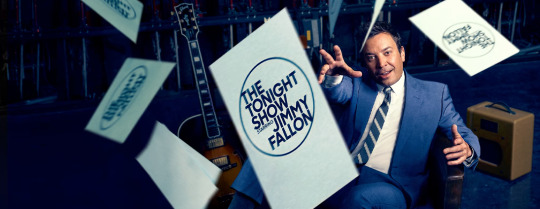
Jimmy Fallon (2009-2014: Late Night with Jimmy Fallon, 2014-present, The Tonight Show with Jimmy Fallon)
The most aloof member of the Strive Force is easily Jimmy Fallon. I've long thought of Fallon as the accidental lottery winner of the Leno vs. Conan late-night war of 2010. He was a no-brainer to replace Conan on Late Night, but once Leno's original successor was out of the picture, the big-boy-job of the coveted Tonight Show fell into his lap in 2014. He's turned it into the most modern late-night show with his higher-concept, Youtube-friendly, celebrity bits. Jimmy's energy is what the Tonight Show needs, but when placed among his peers, Fallon seems outclassed. He's inherently more charming than the rest of the Strike Force, and pretty fast on his feet, but for long stretches of the podcast, it almost seemed like he was either on-mute or not paying attention. Maybe he was waiting for his opening and just more polite than the others, but his soft-spoken demeanor got bulldozed through much of the series. With that being said, his willingness to play the buffoon might have turned him into the star of Strike Force Five. The infamous episode 5, in which Fallon created a match-game style quiz for the hosts and their spouses quickly devolved into a confusing train wreck that only got funnier as it spiraled into chaos. The potential for antics like this became one of the reasons to check out the show. Fallon leaning into his sheep-ish oaf routine had him emerging as the comedic battery of many of the episodes. He seems like the kind of comic that can show up half-prepared and still crush a room, just because his quick wit and charm do most of the heavy lifting. The most disappointing thing about Fallon's presence on the podcast was a complete lack of acknowledgment of the Rolling Stone article scandal, which was published a mere week after Strike Force Five's debut.
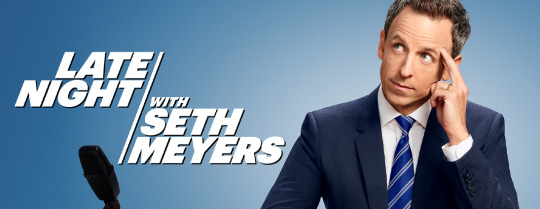
Seth Meyers (2014-present: Late Night with Seth Meyers)
Meyers is secretly the funniest member of the Strike Force Five. While his career may not be as prestigious as his podcast-mates, (this was hilariously made clear as the crew discussed the sad t-shirt rack of Late Night shirts in the NBC studio store at 30 Rock), Meyers is the most accomplished stand-up comedian of the bunch and that can't be ignored. He's the fastest with a joke, the funniest with that joke, and can craft a long-form story from his life with a careful-comedic-nuance I've never heard from any of the others. His version of Late Night strays from what Letterman, Conan, and Fallon did by being more of a Weekend Update or The Daily Show-style news desk show, but he's comfortable with that format and it works for his humor. A lot of Strike Force Five was 5 funny dudes fighting for air time, and while Kimmel and Colbert did the most talking, Meyer's joke-per-minute rate was off the charts compared to the two more talkative hosts. Like one of his predecessors, Conan, Seth Meyers does not get enough credit for the quality of his work and like Conan, he will likely get screwed out of The Tonight Show job. Conan's was a true screw job, but Seth's will more-than-likely be an age hurdle. Meyers is the same age as Fallon and both of them got their current shows around the age of 40. If Fallon hosts The Tonight Show for 25 years (which is reasonable, Leno finally left the show when he was 64) both him and Meyers will be 65. I don't see NBC giving their premiere late-night franchise to a 65-year-old Meyers. Note: Watch Seth Meyers: Lobby Baby on Netflix and you will understand my love for his stand-up.
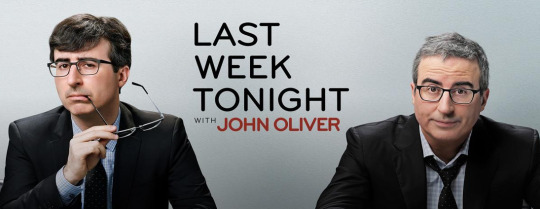
John Oliver (2014-present: Last Week Tonight with John Oliver)
Like Colbert, John Oliver comes from Jon Stewert's stable of Daily Show correspondents. He's carved out a unique place in the Sunday night landscape, where his often outlandish and troll-like dark humor has thrived. He's my personal favorite of the bunch, and his show is the most likely to teach you something genuinely valuable. He's the only non-American-born host on Strike Force Five and the only host without a nightly show. His inclusion is curious, yet welcomed. Juxtaposed with his Strike Force peers, Oliver's bitingly dark wit and chaos-favoring humor stands out. No one enjoyed Fallon's Match-Game going up in flames as much as John Oliver and he seems to genuinely gain his life force from getting under the skin of the subjects on his show. On the podcast, Oliver was one of the more quiet hosts, and that led to his presence feeling more like a courtesy than an obligation. In my mind, I can hear him saying in his most polite British voice, "Oh, I'm aware that I don't exactly belong here, but I'm appreciative of the opportunity." Like Colbert's Southern roots, maybe John's just too British to dominate time on a podcast with so many white American hosts. Oliver is a great stand-up comic too. Like Meyers, if his TV career ended tomorrow, he could easily fall back on his remarkable stand-up talents and find excellent work for the rest of his life. John Oliver is a gem that I think would be dullened by a nightly show, and as a huge fan of both him and his show, I'm super grateful he was asked to be a part of the podcast. Hearing him hold his own with the more mainstream late-night stars was wonderful.
As a whole, the show was really fun. It's a snapshot of a moment in time that will never be captured again. Imagine if, David Letterman, Conan O'Brien, Tom Snyder, Jay Leno, and Dennis Miller had a radio show in 1997. What would that have sounded like? What would we have learned from it? It's just fascinating. I guess I need to mention the John Stewart and David Letterman episodes of Strike Force Five. It was great getting two legends of the format in on the conversation, but I don't know if it was necessary. Note: Letterman is super old now, but he's still sharp as a tack and maybe the best to ever do the late-night job.
One of the elephants in the room on Strike Force Five is the distinctive lack of any representation of people of color. As it stands, I'm not aware of any current major shows hosted by people of color. Both the Late Late Show and Daily Show's desks are currently vacant with the former likely to not be filled at all. The all-white Strike Force Five panel might just be a by-product of who is still watching these shows. It's probably middle-aged white people who are irreversibly accustomed to watching late-night television, and as the format dies, they will go down with the ship. In turn, the risk-averse networks stick with the white male hosts to not scare their tiny remaining audience away. It's not just, but sadly it's probably true.
Network talk shows might be a dying genre, but while they cling to relevance, Strike Force Five could go down as an important moment in the history of late-night television and I'm thrilled to have been here to experience it in real-time.
#striveforcefive#jimmyfallon#jimmykimmel#stephencolbert#john oliver#seth meyers#jimmy kimmel#jimmy fallon
19 notes
·
View notes
Photo

30 notes
·
View notes
Text
Fact Checking Blog #1 / Looking for Previous Works
by Sydney Phillips
Since this assignment came about, I knew the first thing I wanted to focus on was Imane Khelif. The Algerian professional woman’s boxer who recently underwent social media harassment and threats for her performance in the 2024 Paris Olympics. Out of this dumpster fire of social media harassment came J.K Rowling. Author of the *very famous* Harry Potter series that inspired a series of movies and even a theme park to be made after her successes from Harry Potter. You might be wondering, “What does J.K Rowling have to do with boxing” and the answer is NOTHING.
The discourse sparked from a boxing match between Imane Khelif and Angela Carini, her Italian competitor, who pulled out of the match just mere seconds after it began. Within their 46 second round, Carini abandoned the match which lead to Khelif’s win. Carini never attempted to shake Khelif’s hand after the round and spoke to a camera saying “I felt severe pain in my nose, and with the maturity of a boxer, I said ‘enough’ , because I didn’t want to, I didn’t want to, I couldn’t finish the match” (Beacham). Since Carini’s unexpected decision, this rose speculation about Khelif and her background.
In 2023, “Khelif was disqualified from the 2023 World Championships after failing an unspecified gender eligibility test” (Beacham). As this came to light, people rose their pitchforks and lit their torches against Imane Khelif and her gender became the spectacle of the Paris Olympics.
To name a few people who were ready to take down Khelif, Logan Paul, YouTuber turned podcaster and CEO who has his own problematic past, former President Donald Trump and J.K Rowling. Below, there are multiple tweets from Rowling’s personal twitter page where she openly criticizes Khelif and even says Khelif is a male.



Now, Rowling is not a stranger to openly revealing her problematic thoughts on her social media pages. She has openly condemned the transgender community as well as shown racism towards the black community in her books and in real life.
When this became a trending topic on Twitter, I didn’t immediately chose sides but instead, did my own research into Imane Khelif and her background.
Khelif has always competed as a woman in women’s events, including the 2020 Tokyo Olympics. Her father, Omar Khelif, even took to national television showing his daughter’s birth certificate on French television. Algeria also does not recognize the LGPBTQ+ community as persons and CBS Sports states that “It is unlikely the Algerian government would allow someone identifying as anything other than a heterosexual and their assigned gender to represent the country on a world stage” (Mahjouri).
Most of the discourse and outcry of Khelif’s gender seemed from Khelif’s “…inability to compete under the International Boxing Association, a sanctioning body banned by the Olympics since 2019” (Mahjouri). Both Khelif and another competitor, Lin Yu-Ting were disqualified after an unspecified gender test was administered. As the discourse continued, the International Boxing Association President, Umar Kremlev, allegedly revealed the test dented the prescience of XY chromosomes. Kremlev then spoke in a press conference stating “These testing [sic] show that they have high level of testosterone. Like men. They have men’s level of testosterone. We cannot go further into our investigation — whether they were born like men or some changes intervened at the later stages” (Mahjouri). This is where people took what Kremlev said and ran, including J.K Rowling, forming their own narrative and incorrect opinions and spreading them online.
Since Kremlev’s press conference, Mark Adams, a spokesperson for the International Olympics Committee stated in a press conference Sunday, “The test themselves, the process of the tests, the ad how nature of the tests are not legitimate. The testing, the method of the testing, the idea of the testing which happened kind of overnight. None of it is legitimate and this does not deserve a response” (Mahjouri / Adams). Adams continues to say “I would just say that everyone competing in the women’s category is complying with the completion eligibility rules, They are women in their passports” (Adams).
The International Olympics Committee has since stripped the International Boxing Association of their status as the global governing body for boxing due to governing issues and judging scandals.
So is J.K Rowling correct in her belief that Imane Khelif is a man brutally punching women?. The answer is NO. J.K Rowling, Donald Trump and Logan Paul have all spread misinformation on the internet with their false narrative of Imane Khelif being a male. Imane Khelif has been a victim of social media harassment and gender policing on a global stage.


Sources:
Beacham, Greg. “Algeria Boxer Imane Khelif Wins First Olympic Fight When Opponent Angela Carini Quits.” AP News, AP News, 5 Aug. 2024, apnews.com/article/olympics-2024-boxing-gender-4b6eb881cce9c34484d30c68ad979127.
Beacham, Greg. “Who Is Imane Khelif? Algerian Boxer Facing Gender Outcry Had Modest Success before Olympics.” AP News, AP News, 4 Aug. 2024, apnews.com/article/olympics-2024-imane-khelif-boxing-paris-2eb07d442ffb29a61e09911884dcdaa9.
Mahjouri Aug 9, Shakiel. “2024 Olympics Boxing: Who Is Imane Khelif? How the Algerian Boxer Became a Symbol of the Gender Debate.” CBSSports.Com, 9 Aug. 2024, www.cbssports.com/olympics/news/2024-olympics-boxing-who-is-imane-khelif-how-the-algerian-boxer-became-a-symbol-of-the-gender-debate/.
3 notes
·
View notes
Photo

Character Actress
Karen Steele (March 20, 1931 – March 12, 1988) Actress and model with more than 60 roles in film and television. Her most famous roles include starring as Virginia in Marty, as Mrs. Lane in Ride Lonesome, and as Eve McHuron in the Star Trek episode "Mudd's Women".
In 1954 she landed the role of Millie Darrow in "So False and So Fair" on the television anthology Studio 57, but a supporting role in Marty (1955) was her highest profile film role. She played Virginia and got the part because director Delbert Mann had confused her with an actress from New York whom he and writer Paddy Chayefsky had intended to play it.
In 1957, she guest starred on the TV program Maverick, as Molly Gleason in the episode "Point Blank" opposite James Garner and Mike Connors. In 1958, she played the titular role in the episode "Madame Faro" of NBC's Jefferson Drum, another western series.
Steele made two guest appearances on CBS's Perry Mason, as Doris Stephanek in "The Case of the Haunted Husband" (1958) and as murder victim Carina Wileen in "The Case of the Fatal Fetish" (1965). She appeared as Mae Dailey in the 1961 episode "Big Time Blues" on the ABC/Warner Brothers drama, The Roaring 20s. Earlier, she was cast in a guest-starring role in another ABC/WB series, The Alaskans starring Roger Moore.
In 1962, she portrayed the part of Dolly LeMoyne in the episode "The Woman Trap" on CBS's Rawhide starring Clint Eastwood. Her character in "Survival of the Fattest", a 1965 episode of NBC's Get Smart, was named Mary 'Jack' Armstrong, said to be "the strongest female enemy agent in the world"
Like many actresses, as she got older, she turned to television commercials for income. She also became involved in charitable causes and community service. (Wikipedia)
IMDb Listing
2 notes
·
View notes
Text
Holmes & Watson
Actually it should be common knowledge that Sherlock Holmes stories can not work without John Watson. Because without John Watson Sherlock Holmes would just be a weird nerdy crow solving cases. It is John Watson who makes him famous, who tells his story, who gets him away from drugs eventually.
Nevertheless we still get adaptations where John Watson is erased because he is... boring? I don’t really know to be honest. One of the most recent adaptations who also erases John Watson is ENOLA. In the Enola movies Sherlocks cases are always discussed in the press, he is a superstar... even though he has no partner who writers down his cases for him. Weird plot hole, but thats not my point today
But - even though the movies erase John Watson - they still drop a really interesting line why a Sherlock Holmes story without John Watson can never work. Sherlock offers to work together with Enola and says:

Enola rejects the offer and responds with:

But why does she rejects the offer, even though she also admits that it would be her dream to work alongside Sherlock? Yes she says “I would be always in your shadow”. But thats only half of the truth. For Enola a Holmes&Holmes relationship wouldn’t be good because she would always be in Sherlocks shadow. But what about Sherlock? Why would a Holmes&Holmes relationship bad for him? Would he really be lonley if he would work together with his sister? Sadly the show never really gives an answer to that and “only” uses this scene as a set up to introduce Watson.
Good for us CBS Elementary my beloved also had an episode with the same topic and digged a lot deeper into the question why Holmes on his own (aka Holmes&Holmes) is super hurtful for Sherlock. The episode is season 3x19 and has the glorious title “One Holmes, One Watson”
Short summary: To cope with a trauma Joan tries to turn herself into a second Holmes, to get rid of friends and emotions that can potential hurt her again: Holmes&Holmes. Sherlock realizes that this isn’t a good idea and give a beautiful and very on point summary why a Sherlock Holmes story can never work without a Watson:
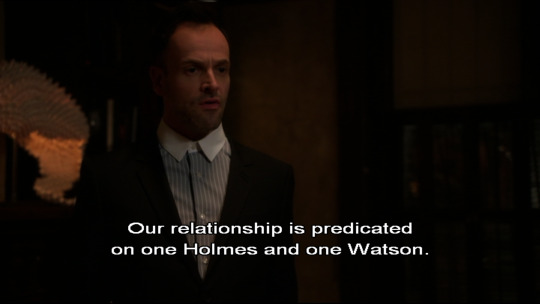


But why doesn’t it work? Whats so problematic about Holmes on his own aka Holmes&Holmes? Enola sadly didn’t gave us an answer to that. But Elementary did a few scenes later:

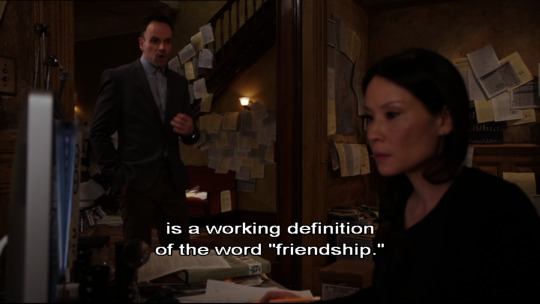
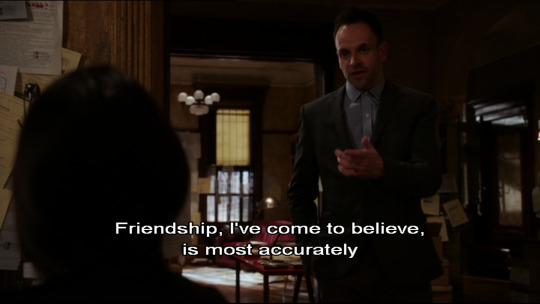

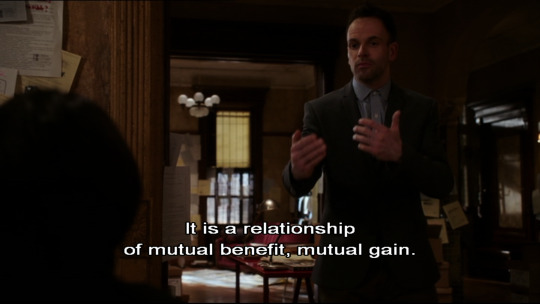



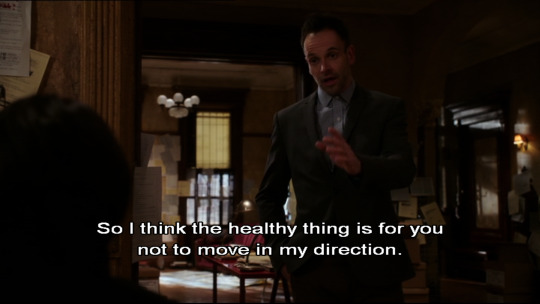

This is why every Sherlock Holmes story needs a John Watson. Because Sherlock Holmes on his own is not complete. Sure, he is a brilliant problem solver, a lover of dogs, a chemist. But he is also anti-social, has a drug problem, has a little EQ and a fucked up night&day rythm.
John on the other hand is emphatic, nice, friendly, makes friends easily, enjoys his sleep. But he is also traumatized from the war, struggles to get back on his feets and to face his trauma.
You know the theory in greek mytholgy about the spherical humans? The spherical humans contains of two humans, fitting together perfectly, forming a round body. The gods were jealous at the humans because together the spherical humans had a really strong power. So the gods cut the spherical humans in two parts and placed the parts all over the world so they would have problems finding their fitting part again. And now every human is searching for their missing part, so they can eventually form the spherical human again and become stronger together.
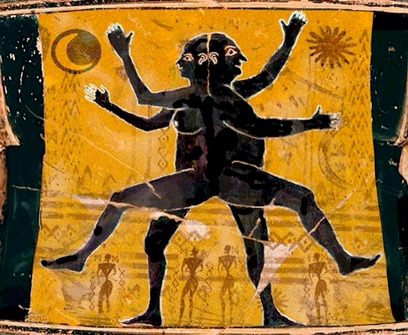
John and Sherlock are a spherical human. Sure, one half can work without the other, but they are weak like this. And so is the story: weak.
You always need both of them.
This is not something I made up. It was also already written down in the ACD canon:
“It is both, or none," said he. "You may say before this gentleman anything which you may say to me." - A SCANDAL IN BOHEMIA
Of course I do not expected the Enola Holmes writers to be familar with ALL Sherlock Holmes stories (of course I do but if I say that out loud I sound like a purist again), because it is about Enola but you should at least be familar with some basic concepts/rules for the original ACD canon characters. That includes the scene above... and of course The Three Garridebs and the CAM case. Hand holding behind closed curtains!
And I honestly fear that the writers of the Enola movies have not understood yet that it is always “both or none” and only introduced John Watson because he necessary for the next storyline to come. I fear that they only know what to do with John Watson as a character when he is relevant for the story, and do not know what else to do with him... On the other hand: Sherlocks lonliness is mentioned around three times in Enola 2, so the writers do seem to be aware that Sherlock needs his Watson? But why wait until the end of Enola 2 to introduce him? Didn’t they knew where he fits into the storyline of the second movies?
Anyways: I hope that when writing the script for the third movie they slowly will become familiar with Watson as a character and slowly find out where his place is in the Enola movies. (At least I hope so, movies where they are just cold distant friends, is the most unpleasant thing to watch imo... IF we get Enola 3).
TL:DR: Don’t seperate Sherlock Holmes from John Watson
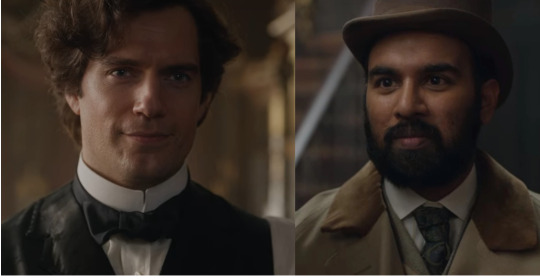
38 notes
·
View notes